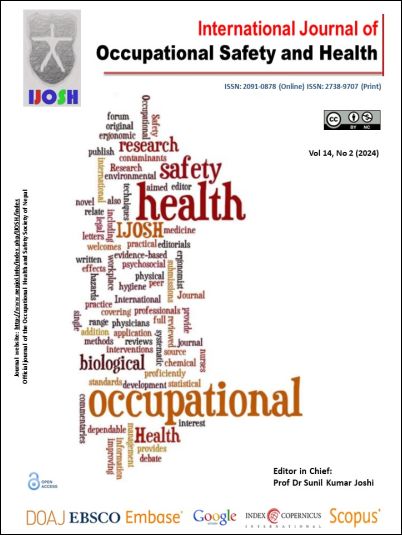Micronuclei in the exfoliated oral epithelial cell: a cross-sectional study in Peruvian artisanal miners
DOI:
https://doi.org/10.3126/ijosh.v14i2.56004Keywords:
Artisanal mining, Micronuclei , Nuclear alterationAbstract
Introduction: Artisanal mining in Peru is an activity that generates a risk of exposure to different compounds, among which mercury and particulate matter stand out. The use of laboratory indicators to assess genotoxicity induced by work activity is a priority need. Our objective was to determine the micronucleus count in buccal cells of artisanal miners in Peru during 2020.
Methods: We designed a cross-sectional study where 80 artisanal miners were evaluated who underwent scraping in the inner area of the cheek to obtain epithelial cells that were stained with Feulgen's staining, and micronuclei and nuclear alterations were identified on a count of 2000 cells.
Results: We found that the mean micronucleus count was 27.5±8.0 (CI95: 25.7 – 29.3, min. 15, max. 48). For the other nuclear alterations such as nucleoplasmic bridges, budding, and binucleation, only up to one alteration was evidenced for each total count. The number of years of work (p=0.004) and age (p<0.001) were the only variables associated with the micronucleus count.
Conclusion: The nuclear alterations in buccal cells of artisanal miners exposed to particulate material were micronuclei, nucleoplasmic bridges, budding, and binucleations, the most frequent being the presence of micronuclei, with a mean value of 27.5 micronuclei per 2000 cells counted.
Downloads
Downloads
Published
How to Cite
Issue
Section
License
Copyright (c) 2024 The Author(s)

This work is licensed under a Creative Commons Attribution-NonCommercial 4.0 International License.
This license enables reusers to distribute, remix, adapt, and build upon the material in any medium or format for noncommercial purposes only, and only so long as attribution is given to the creator.





